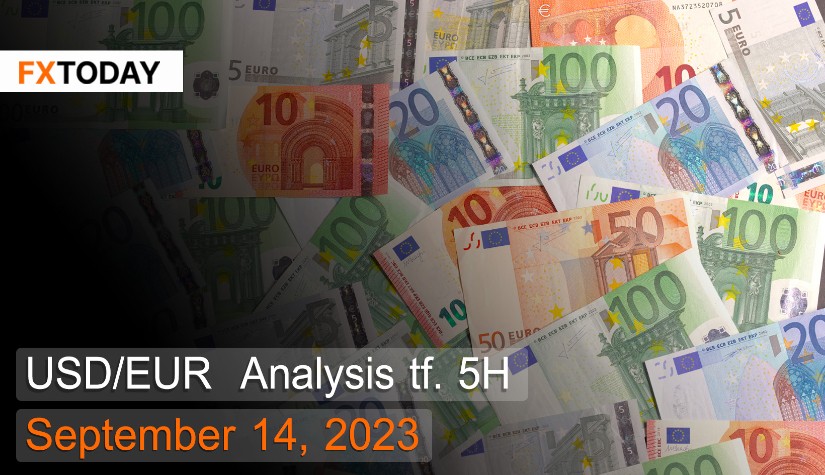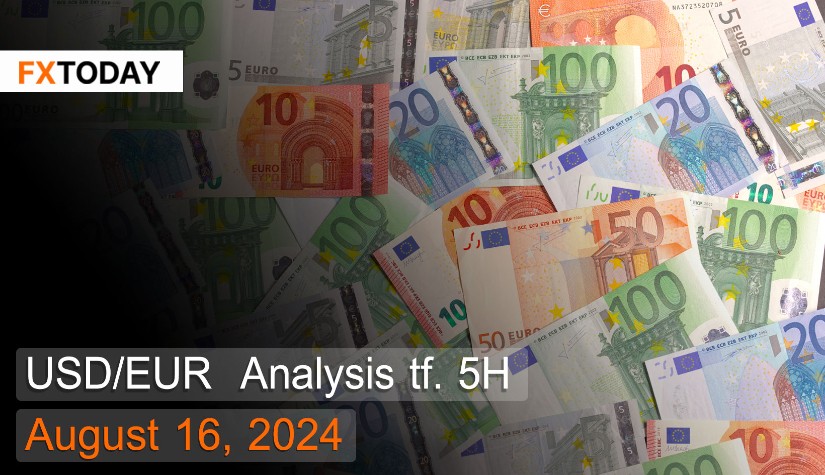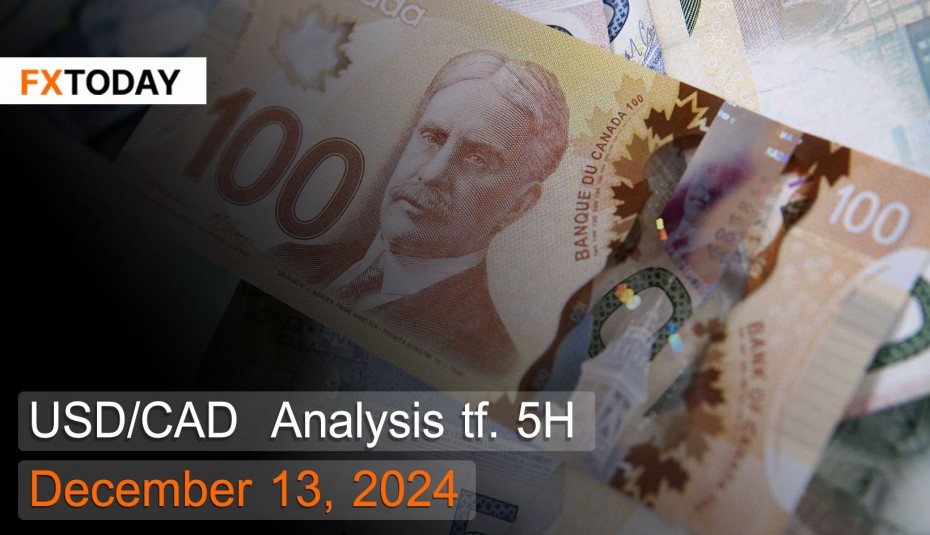The economy of the Eurozone is currently weak and may experience a recession.
The euro has weakened once again due to investor uncertainty surrounding the outcomes of this month's meetings and anticipation of the European Central Bank (ECB) meeting. Reports from policymakers indicate that the ECB anticipates inflation rates to remain above 3% next year, leading markets to expect another interest rate hike this week. This comes despite recent economic data from the Eurozone still signaling weakness.
The expected rate hike is 25 basis points (bps), with a possibility of up to 75% according to ECB's revised growth forecasts for the Eurozone, projecting growth rates of 0.8% for this year and 1.3% for the next year. The inflation forecast for this year is at 5.6%, while the forecast for the following year has been slightly revised up from 2.8% to 2.9%.
Eurozone GDP grew slightly by 0.1% in the second quarter, driven by increased government spending and imports, counteracting a decrease in exports. Exports account for over 50% of the GDP. Additionally, the Eurozone was impacted by Germany, the largest economy in the Eurozone, experiencing an economic slowdown, significantly affecting economic data and raising concerns about the potential for a recession if conditions do not improve.
The number of employed individuals increased by 0.2% on a quarter-on-quarter (QoQ) basis, totaling 166.7 million people in the second quarter. This represents a slight uptick after a slowdown in the first quarter. However, despite the increase in employment, this growth is considered modest and does not meet expectations. It also reflects a labor market that remains somewhat tight and susceptible to further slowdowns if the European Central Bank (ECB) decides to implement more stringent policies.
The yield on 10-year government bonds in the Eurozone has seen another increase, following a recent slight decline. Similarly, yields on US government bonds have also risen after unexpected inflation data, with inflation rates reaching 3.7%, putting pressure on the euro's value.
Techical analysis data (5H)
Resistance: 0.9324, 0.9331, 0.9340
Support: 0.9309, 0.9299, 0.9293
Source: Investing.com
| Name | S3 | S2 | S1 | Pivot Points | R1 | R2 | R3 |
| Classic | 0.9293 | 0.9299 | 0.9309 | 0.9315 | 0.9324 | 0.9331 | 0.9340 |
| Fibonacci | 0.9299 | 0.9305 | 0.9309 | 0.9315 | 0.9321 | 0.9325 | 0.9331 |
| Camarilla | 0.9313 | 0.9314 | 0.9316 | 0.9315 | 0.9319 | 0.9320 | 0.9322 |
| Woodie's | 0.9293 | 0.9299 | 0.9309 | 0.9315 | 0.9324 | 0.9331 | 0.9340 |
| DeMark's | - | - | 0.9312 | 0.9316 | 0.9327 | - | - |
Buy/Long 1: If the price touches the support zone in the range of 0.9299 - 0.9309 but cannot break through the support at 0.9309, you may consider setting a Take Profit (TP) level around 0.9331 and a Stop Loss (SL) level around 0.9293, or according to your acceptable risk.
Buy/Long 2: If the price break through the resistance zone in the range of 0.9324 - 0.9331, you may consider setting a Take Profit (TP) level around 0.9340 and a Stop Loss (SL) level around 0.9299, or according to your acceptable risk.
Sell/Short 1: If the price touches the resistance zone in the range of 0.9324 - 0.9331 but cannot break through the resistance at 0.9324, you may consider setting a Take Profit (TP) level around 0.9299 and a Stop Loss (SL) level around 0.9340, or according to your acceptable risk.
Sell/Short 2: If the price break through the support zone in the range of 0.9299 - 0.9309, you may consider setting a Take Profit (TP) level around 0.9293 and a Stop Loss (SL) level around 0.9331, or according to your acceptable risk.
| Name | Value | Action |
| RSI(14) | 48.932 | Neutral |
| STOCH(9,6) | 37.299 | Sell |
| STOCHRSI(14) | 40.895 | Sell |
| MACD(12,26) | 0.000 | Buy |
| ADX(14) | 22.140 | Buy |
| Williams %R | -62.717 | Sell |
| CCI(14) | -6.4568 | Neutral |
| ATR(14) | 0.0022 | Less Volatility |
| Highs/Lows(14) | 0.0000 | Neutral |
| Ultimate Oscillator | 42.689 | Sell |
| ROC | -0.129 | Sell |
| Bull/Bear Power(13) | 0.0006 | Buy |
|
Buy:3 Sell:5 Neutral:3 Summary:Sell |
||
















